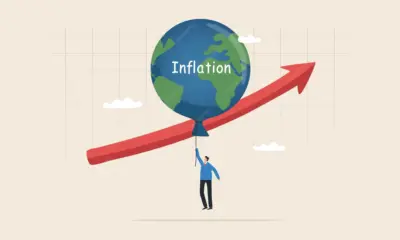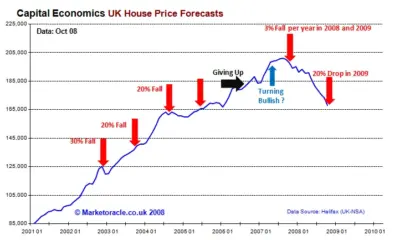Business
Housing activity shows renewed interest from buyers

The United Kingdom housing market is showing renewed signs of activity as buyers re-enter the market with greater confidence. After a period of cautious behaviour shaped by shifting interest rates, cost-of-living pressures, and broader economic uncertainty, recent indicators now point to a more optimistic environment. Estate agents across the country are reporting increased viewings, faster response times to new listings, and a noticeable rise in mortgage inquiries. While the market remains varied across regions, the overall sentiment reflects a clearer sense of stability that is encouraging both first-time buyers and long-term homeowners to make decisions they had previously delayed. This renewed interest marks an important moment for the property sector as it adapts to changing economic conditions and evolving buyer expectations.
Buyers respond to improved mortgage conditions
One of the main drivers behind the renewed activity is the gradual improvement in mortgage affordability. Lenders have introduced more competitive rates, and several major banks are expanding mortgage product options to attract new customers. Many buyers who postponed their plans during previous quarters are now re evaluating opportunities with more favourable lending terms. This shift has created a noticeable rise in mortgage approvals, especially among young professionals and growing families who have been waiting for more predictable financial conditions. Improved stability in the credit market is helping buyers regain confidence in long term financial planning.
Regional markets show varied but positive momentum
Different regions across the UK are experiencing distinct patterns of growth, but the overall trend remains positive. Areas outside London, including northern cities and emerging commuter towns, are seeing strong demand due to attractive prices and recent investments in local infrastructure. In major metropolitan areas, renewed interest is focused on neighbourhoods with good transport links, high quality schools, and modern amenities. Smaller towns and coastal communities are also gaining attention as remote and flexible work arrangements continue to shape lifestyle preferences. This regional diversity creates a broad foundation for sustained national housing activity.
Sellers adjust expectations to meet buyer demand
Sellers are playing a crucial role in supporting the renewed momentum in the market. Many have adjusted expectations to reflect more realistic pricing strategies. This willingness to align prices with current conditions has helped reduce negotiation delays and increase the pace of transactions. Competitive pricing is particularly effective in attracting first time buyers who remain sensitive to affordability concerns. Well presented homes, energy efficient upgrades, and flexible moving timelines have become important advantages for sellers seeking strong engagement from serious buyers.
New build developments attract steady interest
The new build sector is benefitting from rising buyer confidence. Modern developments that offer energy efficient designs, smart home features, and long term cost savings continue to draw attention. Developers are focusing on delivering high quality living environments supported by green spaces, community facilities, and improved local services. Government backed schemes that support first time buyers are also contributing to stronger interest in new build properties. These developments remain particularly appealing to purchasers seeking low maintenance homes with predictable monthly costs.
Rental market conditions influence buying decisions
Rental trends are influencing a growing number of buyers who are considering property ownership as a long term financial choice. Rising rental prices in many cities have led individuals to compare the costs of renting with the potential benefits of owning a home. For those with stable incomes and access to competitive mortgage products, purchasing a property is becoming a more attractive option. This shift has supported increased activity among young professionals who are exploring opportunities that match both their financial and lifestyle goals.
Economic stability supports market confidence
The broader economic environment continues to play an important role in shaping housing market activity. Recent stability in inflation and consistent employment levels have helped improve household sentiment. Many buyers feel more secure in making long term commitments as economic conditions become more predictable. Industry analysts note that improved confidence is likely to support sustained interest in the housing sector over the coming months. This stability also helps reinforce the confidence of lenders, developers, and estate agents who collaborate to maintain a smooth market experience.
Property technology enhances buyer experience
Modern property technology continues to transform how buyers engage with the housing market. Virtual tours, digital negotiation tools, and detailed listing platforms allow buyers to explore multiple properties efficiently. These digital enhancements make the process more accessible and transparent, allowing individuals to make informed decisions at an earlier stage. Estate agents are increasingly relying on analytic tools to track buyer preferences and provide personalised property recommendations. This combination of technology and market stability helps create a more dynamic and user friendly environment.
Market outlook remains balanced and encouraging
The renewed interest from buyers has created a balanced and positive outlook for the UK housing market. While challenges remain for certain groups, particularly first time buyers facing affordability constraints, the overall trajectory shows promising signs of sustained improvement. As mortgage products continue to evolve and economic conditions remain stable, both buyers and sellers are expected to play active roles in shaping a more predictable and efficient housing environment. The next phase of the market will depend on consistent economic progress, continued investment in regional development, and ongoing adaptation to changing consumer preferences.















